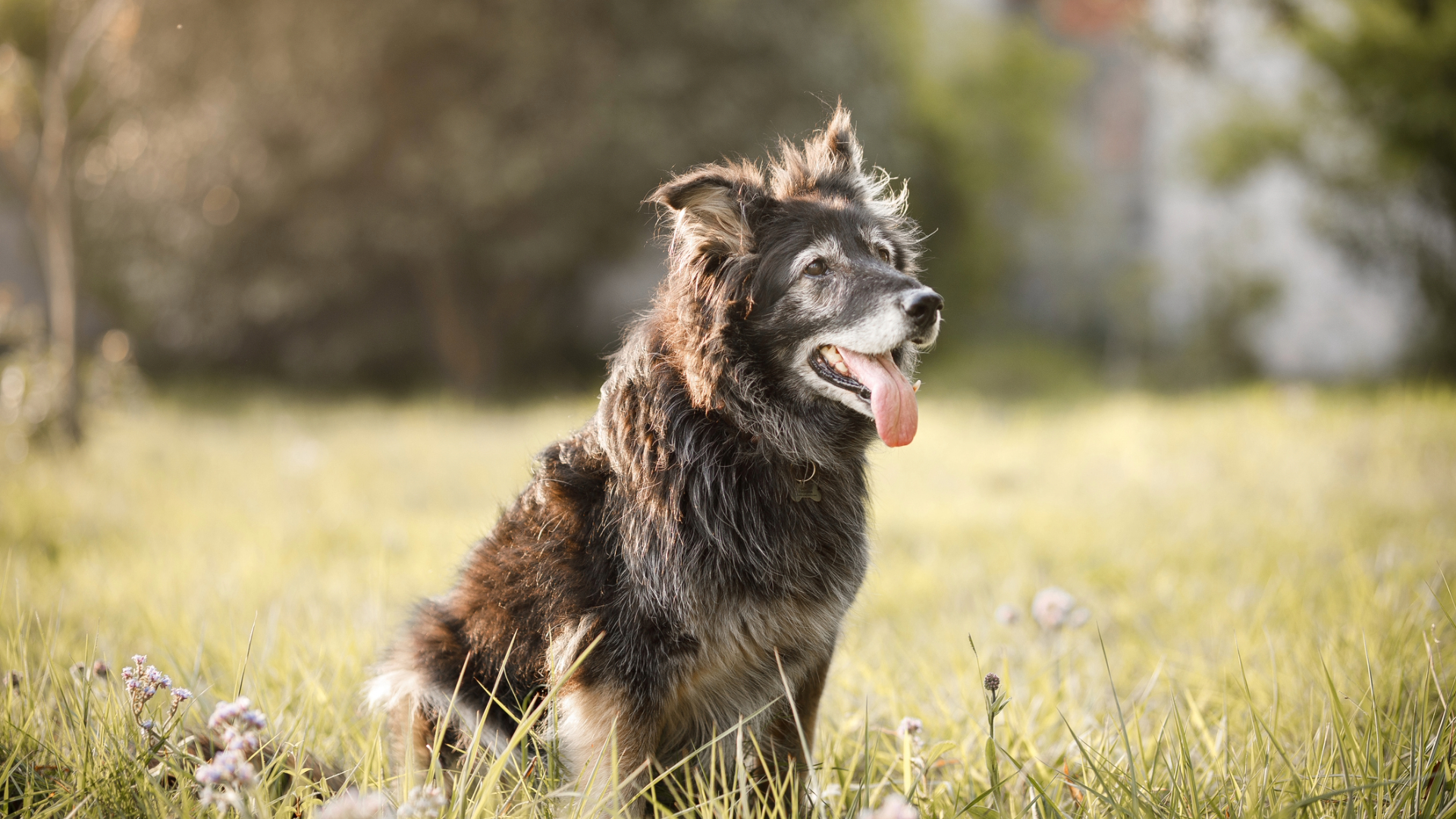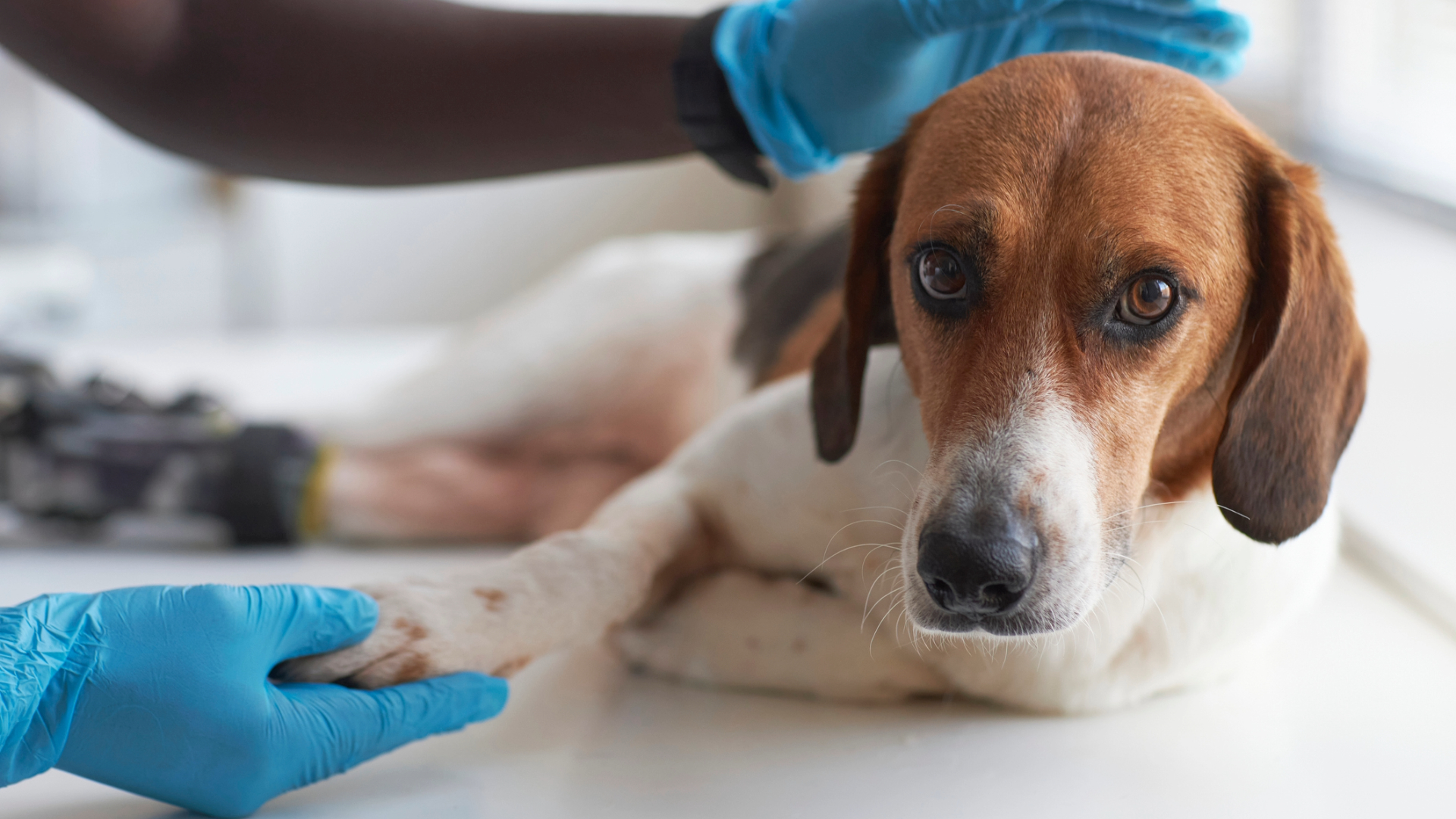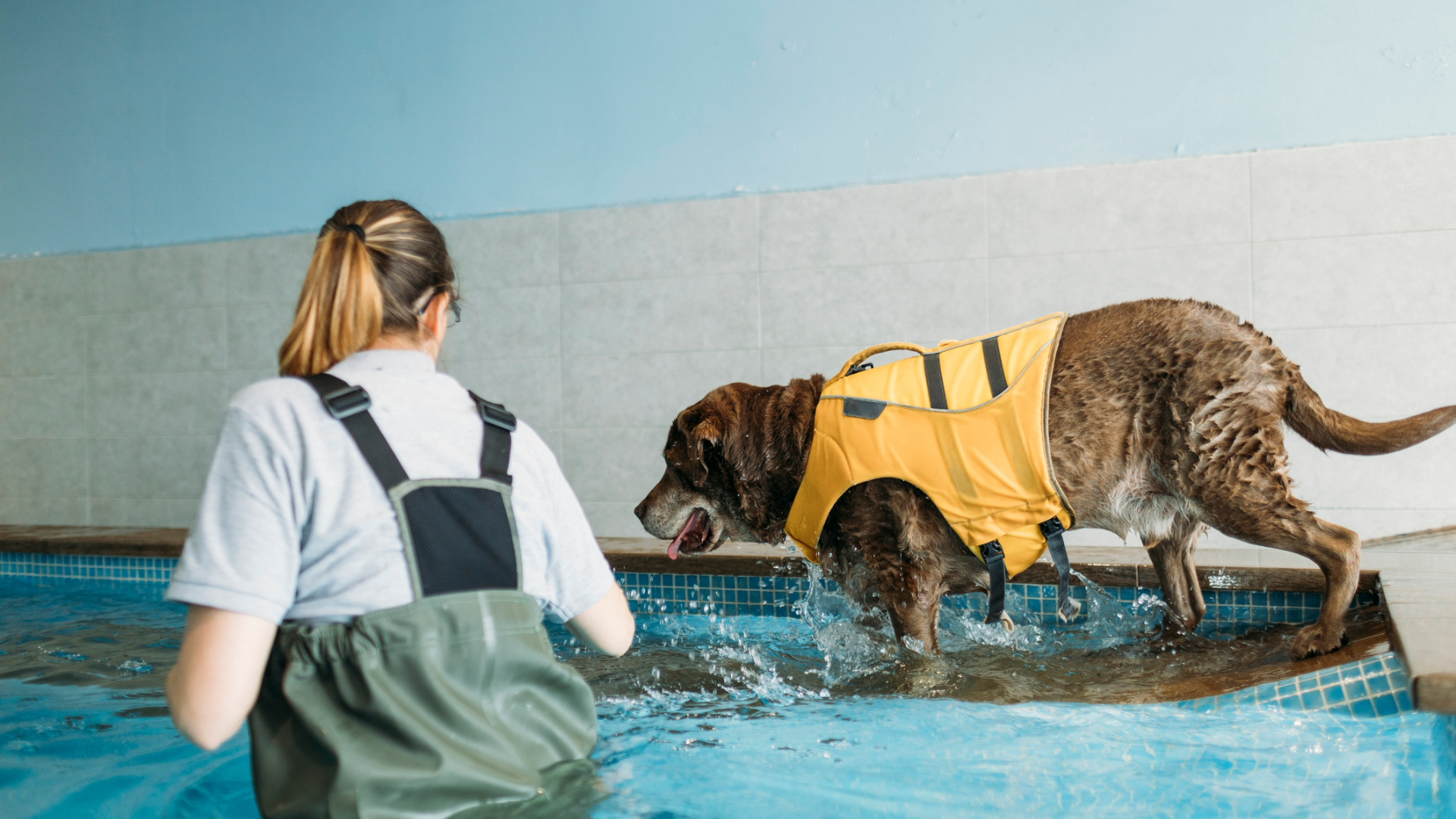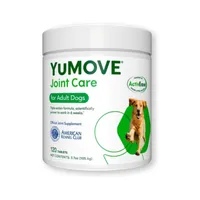Arthritis in dogs: Signs, stages, and management
Read our vet’s top tips for tackling arthritis in dogs head on

Arthritis in dogs is one of the most common chronic conditions seen in veterinary practice, especially in older dogs. It’s a progressive, degenerative joint disease that can cause joint pain, stiffness, and difficulty moving around – often before dog owners even realize anything is wrong. Understanding how to spot the early signs and what you can do to help your dog live a full life with arthritis is key.
I have been working as a vet in general practice for over 13 years. During this time, I’ve treated countless dogs with arthritis – from young, active dogs with early-onset joint disease to elderly companions who just need a little extra support in their golden years. Managing arthritis in dogs is something I’m truly passionate about, because with the right approach, we can really improve their comfort and wellbeing.
In this article, I’ll walk you through exactly what arthritis in dogs is, how to recognize the signs, what the stages of the condition look like, how to manage it effectively, and what to expect as the condition progresses. Whether your dog has just been diagnosed or you’re worried they might be starting to show signs, you’ll find the information and reassurance you need to support them every step of the way.
What is arthritis in dogs?
Arthritis, also known as osteoarthritis or degenerative joint disease (DJD), is a long-term condition where the smooth cartilage that cushions the joints experiences unwanted changes or becomes damaged and starts to break down.
Over time, this causes inflammation, pain, stiffness, and reduced mobility. It’s most common in older dogs, but younger dogs can also be affected – especially if they’ve had joint injuries, developmental issues (like elbow or hip dysplasia), or are overweight.
Arthritis can affect one or more joints. The most common joints affected include the elbows, hips, knees, and spine. As the cartilage wears away in the joints, this allows for bone to rub against bone, leading to joint pain and further joint damage.
In response, the body often tries to stabilize the joint by producing extra bone, which only makes the situation worse. It’s a vicious cycle – but one we can manage with the right support, like giving them the best joint supplements for dogs.
Get the best advice, tips and top tech for your beloved Pets

Signs of arthritis in dogs
Dogs are often incredibly good at hiding pain, so it’s up to us as owners to spot the more subtle signs. Here are some common signs of arthritis in dogs:
- Stiffness, especially after resting or in the morning
- Reluctance to jump, climb stairs, or go for walks
- General limping or lameness
- Slowing down on walks or tiring more quickly
- Difficulty getting up or lying down
- Behavioral changes – becoming more withdrawn, aggressive, irritable or anxious
- Muscle loss around the affected joints
- Licking or chewing at joints
- Audible joint clicking or popping
If you’ve noticed any of these symptoms, it’s best to book a check-up with your vet. Early diagnosis and treatment can make a huge difference to your dog’s comfort and mobility.

Stages of arthritis in dogs
Arthritis tends to develop gradually, and we can roughly divide it into four stages:
Stage 1 – Early/Preclinical
Minimal cartilage damage. Dogs may show no obvious symptoms, though subtle changes like stiffness after rest or reduced enthusiasm on walks might be present. Although there may not be much obvious at home, your vet will be able to pick up signs on X-rays or joint palpation at this stage.
Stage 2 – Mild
Mild cartilage degradation. Dogs may start to show signs more consistently – occasional limping, slight difficulty getting up, or slower movement after exercise.
Stage 3 – Moderate
Noticeable cartilage loss and joint inflammation have occurred now. Dogs are clearly lame at times, show reduced activity, and often appear in pain. Muscle loss and joint thickening may be visible, and they may struggle with everyday activities like climbing stairs.
Stage 4 – Severe
Severe cartilage loss and bone changes. Chronic pain is present even at rest. Dogs may be reluctant to move at all and may need daily pain relief and mobility support. Quality of life becomes a key consideration at this stage.
How to manage a dog with arthritis
There’s no cure for arthritis, but the good news is there are many ways we can help dogs live well with the condition. Management is multimodal – meaning a combination of different treatments works best. Options for management include:
- Pain relief and anti-inflammatories: NSAIDs (non-steroidal anti-inflammatory drugs) are the mainstay of arthritis treatment. They reduce inflammation and improve mobility. Other pain relief options include gabapentin or amantadine in more advanced cases.
- Weight control: Extra weight puts added strain on arthritic joints. Keeping your dog lean is one of the most effective ways to slow arthritis progression and reduce pain.
- Physiotherapy and hydrotherapy: These therapies help build muscle, improve mobility, and reduce pain. Hydrotherapy is particularly useful as it allows dogs to exercise without putting weight on their joints.
- Environmental modifications: Ramps, non-slip flooring, raised food bowls, and supportive orthopedic bedding can all make life easier for an arthritic dog at home.
- Surgery: In some cases, particularly with underlying conditions like cruciate ligament disease or elbow dysplasia, surgical options may be appropriate. Your vet will discuss this with you if necessary.
- Joint supplements: Joint supplements for dogs, like glucosamine, chondroitin, green-lipped mussel extract, and omega-3 fatty acids can help support joint health and reduce inflammation. They’re best started early and used long-term.
YuMove Joint Supplement for Dogs | Amazon
Packed with active ingredients like glucosamine and green-lipped mussel, this supplement helps ease stiffness and promotes flexibility.

How long will a dog with arthritis live?
Many dogs with arthritis go on to live long, happy lives – especially with early diagnosis and good management. It is natural to panic when hearing that your dog is affected by arthritis, but it's important to remember there are lots of management options. I regularly see elderly arthritic dogs enjoying walks, cuddles, and treats well into their senior years.
All that being said, arthritis is a progressive condition, and as it advances, it can significantly affect quality of life. When pain is no longer manageable – despite medications and therapies – it’s time for an honest discussion about quality of life.
In some extreme or end-stage cases, euthanasia may be the kindest option. Especially if your dog is struggling daily and no longer enjoying life. Your vet will guide you through this decision with compassion and be by your side every step of the way.

If your dog has been diagnosed with arthritis, you’re not alone – and there are so many ways to help them cope. The most important thing is to keep talking to your vet, stay consistent with treatment, and make adjustments at home that support your dog’s comfort. With the right care, dogs with arthritis can still enjoy all the things they love most and continue to live a comfortable and content life.
Read next: Obesity in dogs

Emma Chandley is a vet with 14 years of experience and has a keen interest in surgery. After graduating from the Royal Vet College in London in 2011, she achieved a postgraduate certificate in small animal surgery from the British Small Animal Veterinary Association and Nottingham Trent University. She was then awarded advanced practitioner status in the same discipline by The Royal College of Veterinary Surgeons. She has a black Labrador and two pygmy goats at home.
Edited by Megan Milstead.
This page was last updated in May 2025 by Emma Chandley.
Emma Chandley is a vet with 14 years of experience and has a keen interest in surgery. After graduating from the Royal Vet College in London in 2011, she achieved a postgraduate certificate in small animal surgery from the British Small Animal Veterinary Association and Nottingham Trent University. She was then awarded advanced practitioner status in the same discipline by The Royal College of Veterinary Surgeons. She has a black Labrador and two pygmy goats at home.

